LIVING WITH DIABETES
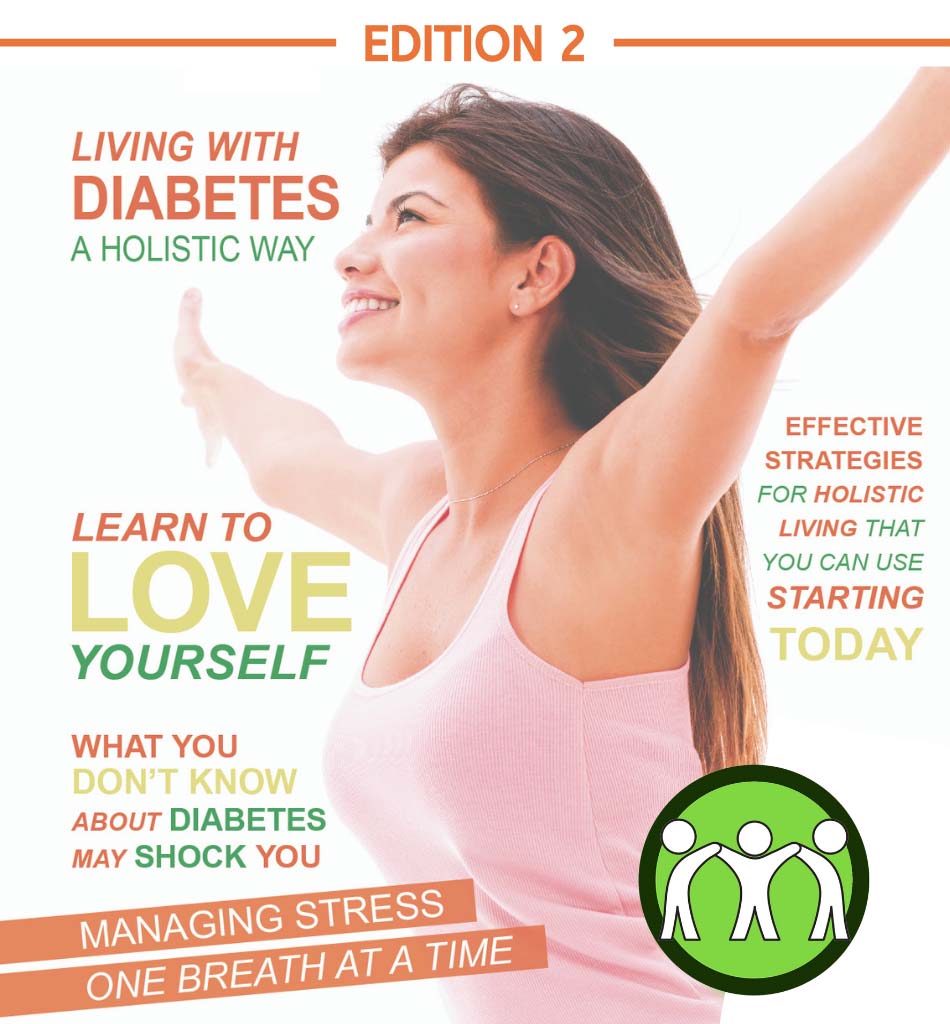
HOLISTIC LIVING |
 |
Editor in Chief Editor at Large Layout Artist |
If you want to advertise your business, product or service with |
Living With Diabetes by Sharon White p.4 Diabetes & Why I’m Confused Living With Diabetes Type 2 Baked Eggs With Tuscan Herbs Diabetes And Sexual Function Living With Diabetes What Can Heal Diabetes Type 2? Food For Diabetics. What Are Good Foods To Eat For Diabetes? The Diet That Reverses Diabetes. Nutritional Ketosis For Diabetes Choco Coconut Energy Truffles Shamanic Healing – Going Deep, Deeper, Deepest Can The Law Of Attraction Help You Manage Or Even Reverse Diabetes? |
Living With Diabetes
There is an epidemic of diabetes in this world. I’m sure it was not as prominent 25 years ago. In fact it was not.
I remember a friend of my mum’s had diabetes and I was astounded that someone had to stick themselves with a needle on a daily basis; now it is almost common place.
You don’t have to take my word for it. Research shows an increase in diabetes. A recent study, ‘A Global Prevalence of Diabetes’ shows the projection in the rise of diabetes by the year 2030.
The goal of the mentioned study was to review the current incidence of diabetes and estimate it’s prevalence by 2030. Based on the study’s findings the total number of people with diabetes is projected to rise from 171 million in 2000 to 366 million in 2030.
This is a near doubling of the people worldwide who have been diagnosed with diabetes in only 30 years!
This study shows an amazing rise of people with the disease with very scary statistics.
In addition a recent article in the Belfast Telegraph shows the annual number of diabetes-related amputations in England is now more than 7,000 a year.
Diabetes is a very real problem. For many not only is it a physical issue it is also an emotional rollercoaster ride. Living with Diabetes does not have to be a life sentence.
We need to ask ourselves; What is causing it? What can be done about it? Can we prevent it? How can we take back control of our health? How to control diabetes? How do we get diabetes facts and real diabetes information? What is the best diabetes management?
The experts in this living with diabetes magazine will answer these questions for you. Diabetes CAN be managed and in some cases reversed. It will require a lifestyle change but, with the correct knowledge and input, your body can repair.
There is a lot of information in this magazine. Please share with anyone who you know will benefit from this information. This epidemic CAN be reduced when people have the correct knowledge.
Enjoy.
References
Wild, et al (2004), Global Prevalence of Diabetes – Estimates for the year 2000 and projections for 2030, accessed 11th July 2015 from http://care.diabetesjournals.org/content/27/5/1047.short
Belfast Telegraph – Accessed 14th July 2015 from the Belfast Telegraph
http://www.belfasttelegraph.co.uk/news/uk/135-diabetes-amputations-per-week-31374748.html


Founder of Global Healing Exchange and Holistic Living Magazine
Please use the information you learn in these magazine as a guide.
This content is not medical advice and is not intended to replace the advice of healthcare professionals.
Always consult your doctor or other healthcare professional before beginning or making health changes.
You should never disregard medical advice or delay in seeking it because of something you have read in this magazine.
RETURN TO FRONT PAGE
Diabetes & Why I’m Confused
When Sharon and I first talked through this edition of Holistic Living Magazine and our experiences with Diabetes it was spookily similar; when growing up, both of us only knew a couple of people with Type I Diabetes, for me an aunt who’d had it for years and a classmate.
Then Type II Diabetes was rare and was still known as Adult Onset Diabetes, rather than the far more familiar Type II Diabetes that we are all aware of today.
Today 90% of all Diabetes cases are of course Type II, and it is no longer known as Adult Onset as the incidence levels in children has rendered that naming moot. Most of us know someone who has living with diabetes stories.
So why the confusion? Well, once I started to research the causes of Type II it struck me that the myriad of ways that ‘experts’ approach the whole concept of diet, exercise and what we should be doing to be healthy was just confusing and contradictory, with the only solid fact that I knew was that being overweight was a major factor in Type II Diabetes.
Now let me delve into the source of my confusion, through this we’ll touch a little on statistics (my favourite bit) cover off the contradicting evidence and then alight on a possible way forward.
First a brief statistics lesson. You will hear many people talk two key terms in statistics; these are correlation and causation, and they are the basis of a fundamental error that people make with statistics.
What is meant by this is, whenever you take a large enough body of data and look for patterns you will inevitably end up with many that correlate, i.e. one thing happens when another does.
What you do not get in most, if not all, patterns you see is a definitive level of causation, i.e. one aspect of the pattern was caused by the other.
Let me demonstrate; the recent Ashes Cricket series has been broadcast on one Australian TV channel for matches one, three and four, and a different channel for match two.
The second match was one that Australia won; here we have a pattern that is correlated, but it is most definitely not a causation…the match being shown on a different channel did not cause Australia to win.
Sadly, while this is a humorous example, many people who should know better make the same mistakes but on a far larger scale.
Now back to the confusion; ‘Diets’ have been around for a lot longer than we think, the one of the first to be popularised was by Lord Byron back in 1820[1], and it feels as though every year since has brought a new fad with it.
These include such memorable ones as the “Reach for a Lucky [cigarette] instead of a sweet”, the Tapeworm diet and of course the perennial low fat diet.
Of course, the low fat diet is the one that seems to have stuck the most, with many organisations, governments and health bodies all extolling the virtues of a low fat diet as a way to control one’s weight and to be a healthier person.
There is only one thing that is wrong with this idea, and that is fat consumption peaked sometime in the late sixties and early seventies, has dropped pretty much constantly since then, and only slightly lifted back up in the last few years [2], and yet people are more overweight than ever before.
This is a classic example of correlation and causation being conflated. The initial data showed that fat consumption after the Second World War was rocketing up at the same time as people were gaining weight and that just had to be the cause of the weight gain in western society (correlation being seen as causation).
Sadly it seems that it wasn’t, so if it’s not fat that is the cause of the problem, then what is? And this is where the confusion comes in; depending on what data you look at, which aspect of human behaviour you look at, then you will get answers that don’t make sense.
That just make things more confusing.
Moving on, let’s look at the current bete noir of the food industry; sugar. Here the evidence seems as solid as it was for fat. Sugar consumption in the Western world has shot up from around about 10 Kg a year at the turn of the 20th century to near a mind boggling 50 Kg today.
As Joanna Rushton calls out in her article “Living with Type II Diabetes” this is 27 teaspoons a day!!
There are books being written about the scourge of sugar [3], newspaper articles [4] and yet at the same time in Australia there are also papers that say that sugar consumption has been dropping in Australia since 1995 [5] which contradicts the thought that sugar is the cause of the rising percentage of overweight people in the country.
So back to being thoroughly confused.
At this point, we could continue down the rabbit hole like Alice, or take stock of what we do know, and instead of getting wrapped up in incomplete and opposing views, just focus on some key facts. And these are the things we do know:
• Being overweight is a key indicator and cause of Type II Diabetes
• Lack of exercise is a contributing factor to weight gain
• Overeating is a major factor in being over weight
Now these statements aren’t earth shattering and are somewhat obvious, but at times in the conversation over diet and health, the obvious gets obscured, lost in the variety of messages.
Instead it is best to go back to basics and the place to start is a simple equation; one kilo of fat is about 7,000 calories [6]. So for every kilo that you are overweight at some point you have consumed 7,000 calories more than your body used.
This is also true vice versa, to lose one kilo you need to burn 7,000 calories more than you consume.
And that is where you need to start; look at your overall calorie consumption. Look at where those calories are coming from. Focus on the obviously high calorie foods, drop all the sugary drinks, reduce (not remove) items high in fat.
Avoid the 1,000 calorie meals. Now add in some exercise to help balance things out.
At no point go crazy, extreme changes of behaviour won’t stick, the weight will just come back with a vengeance. You have to do this gently and steadily. Oh and ignore so many of the messages… they will just confuse you. Living with diabetes everyday health care can be as simple as you make it.
[1] Lesley Rotchford, Health.Com, February 8th 2013
[2] Pearson, Trend of Fat Consumption in the United States.
[3] David Gillespie, 2008
[4] Victoria Lambert, The Telegraph, December 11th 2014
[5] Jennie Brand-Miller, 2011
[6] Clare Collins, How many calories do you need to lose weight
References
Brand-Miller, J and Barclay, A (2011), The Australian paradox: a substantial decline in sugars intake over the same timeframe that overweight and obesity have increased, available from http://www.ncbi.nlm.nih.gov/pubmed/22254107
Collins, C, How many calories do you need to lose weight, accessed 9th August 2015 from https://my.biggestloserclub.com.au/food-fitness/calories-and-weight-loss.html
Gillespie, D (2008), Sweet Poison, Penguin Group.
Lambert, V (2014), Sweet poison: why sugar is ruining our health, accessed 9th August 2015 from http://www.telegraph.co.uk/foodanddrink/healthyeating/9987825/Sweet-poison-why-sugar-is-ruining-our-health.html
Pearson, The Trend of Fat Consumption in the United States, accessed 9th August 2015 from http://wps.prenhall.com/chet_hewlings_nutrition_1/81/20889/5347641.cw/index.html
Rotchford, L (2013), Diets through history: The Good, the bad and the scary, accessed 9th August 2015 from http://edition.cnn.com/2013/02/08/health/diets-through-history/

Editor-at-Large
Please use the information you learn in these magazine as a guide.
This content is not medical advice and is not intended to replace the advice of healthcare professionals.
Always consult your doctor or other healthcare professional before beginning or making health changes.
You should never disregard medical advice or delay in seeking it because of something you have read in this magazine.
RETURN TO FRONT PAGE
Nature’s First Aid |
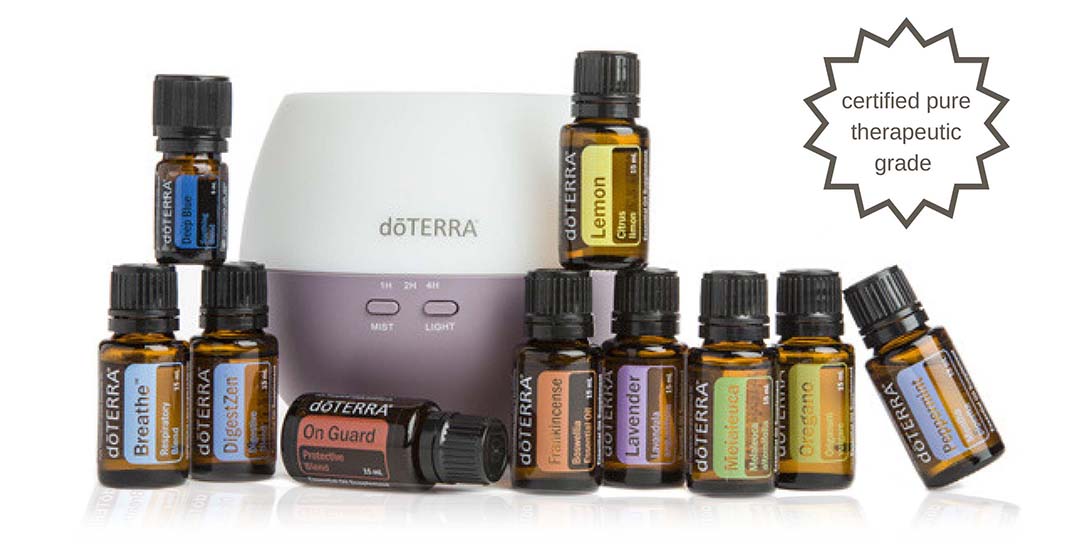 |
| ORDER YOURS HERE |
 |
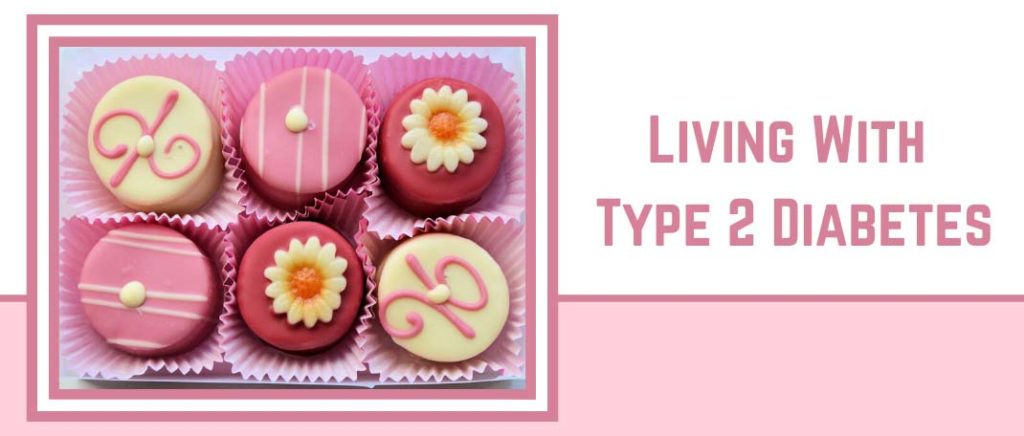
Living With Diabetes Type 2
Type 2 Diabetes is looming as the biggest epidemic and public health issue in human history. Close to 300 million people are affected worldwide and another 150 million forecast to be diagnosed by 2030.
Dr Mark Hyman uses the term “diabesity” to describe the continuum of health problems ranging from mild insulin resistance and being overweight, to obesity, and diabetes.
Diabesity is the underlying cause of most heart disease, cancer, dementia and premature death in the world.
Whilst Type 2 Diabetes is commonly associated with being overweight please don’t think that you’re immune to the “disease” just because you might be thin.
High insulin levels are a precursor to inflammation, high blood pressure, poor sex drive, increased risk for cancer and depression, and you don’t have to be overweight to be suffering from any one of them.
It’s at this point that I’d like to reframe the word “disease” and categorise Type 2 Diabetes as a symptom or the body’s state of dis-ease due to lifestyle choices, after all even science shows diabetes and obesity is 100% preventable and reversible with comprehensive nutrition and lifestyle modifications.
It is also important that we are clear on what dietary choices contribute to diabesity and contrary to what many people are still told by their doctors, it is not through the consumption of quality, cleanly sourced saturated fats and grass fed animal based products.
All the metrics related to diabesity, such as high blood sugar, high cholesterol, high blood pressure, inflammation, and clotting, are being scientifically linked to the consumption of processed carbohydrates, grains, added sugar, and denatured vegetable oils and trans fats.
Added sugars being the greatest concern, particularly high fructose corn syrup that can cause fatty liver disease independent of excess weight, obesity, or Type 2 Diabetes.
Since fructose is handled by the liver in the same way the liver handles alcohol, excess fructose produces similar symptom’s as alcohol abuse: hypertension, high triglycerides, low HDL, obesity, cirrhosis and insulin resistance.
According to sugarscience.org an independent research facility set up by a team of health scientists from the University of California, San Francisco (UCSF), 74% of all packaged food contains added sugar and 36% come in the way of liquid sugar through soda’s, sports drinks, cordials and fruit juices, with growing evidence that is it the most dangerous way to consume added sugar.
Depending on your drug of choice (which soda /pop you drink), it’s easy to down 9 -14 teaspoons of sugar in a single 330ml soda – over twice as much sugar than in an apple, only with no fibre, vitamins, minerals or enzymes to help metabolize the sugar.
The average Australian consumes 192 teaspoons of sugar a week, that’s 960 gr of sugar per week, a little over 27 teaspoons a day.
The World Health Organization recently published their guidelines for sugar intake and recommended that reducing one’s daily intake to 25gr or 6 teaspoons a day would provide significant health benefits.
When you look at how much sugar is in everyday foods that are considered “healthy”, its no wonder people are so challenged with reducing his or her intake. Take Kellogg’s raisin bran crunch, which has 20 grams of sugar per serving (1 cup).
That’s 4 tsps. of sugar and who seriously sticks to the 1 cup serving size? An average bowl of cereal is about 2 ½ cups, that’s 10 tsps. of sugar before you add in the sugar from the lactose in the milk that goes on top.
Not to mention the very addictive quality of sugar that stimulates a dopamine response in the brain with every bite and you have a recipe for a habit that the food industry have made near impossible to quit.
With all this said I have helped numerous clients and families reverse their diabetes, restore healthy liver function and stabilize their blood sugars by focusing on simple nutritional and lifestyle changes.
Here Are Some Of The Recommendations I Start Coaching My Clients On Along With Some Examples:
1. Quit the sugar if you can’t go cold turkey then gradually reduce it on a weekly basis. For example if you take 3 tsp. of sugar in your tea or coffee then reduce it by increments of ½ tsp. so 2 ½ tsp. in each cup each week until you’re taking none. If you start your morning with a glass of OJ, a piece of toast or a bowl of cereal, then start the day with a couple of boiled or scrambled eggs with toast and gradually replace the toast for some steamed vegetables and tomatoes and ditch the OJ. If lunch tends to be a sandwich then drop the bread and have more of the filling, be it chicken and salad or ham, cheese and salad or tuna and salad. If dinner is usually pasta with some sugar laden sauce then choose some clean pasture fed meat or chicken or fresh fish with fresh vegetables and or salad. Choosing liquid sugars and processed carbohydrates full of empty calories and devoid of nutrients, creates high insulin levels, eventually leading to insulin resistance and Type 2 Diabetes. Whole, unprocessed real food balances your blood sugar, reduces inflammation and oxidative stress, and improves your liver function. Keep it simple and choose a rich variety of colorful fruits and vegetables, plenty of omega-3 fats, coconut oil and olive oil, nuts, and seeds. Choose clean pasture fed meat and poultry and fresh wild caught fish. Whole, real foods turn on the right gene messages, promote a healthy metabolism, reverse insulin resistance and diabetes, and prevent aging and age-related diseases like cancer, obesity and heart disease. |
2. Get the right movement Repetitive movement such as running or aerobics can lead to muscular imbalances and related injuries. Contrary to popular belief, weight resistant or anaerobic exercises are more effective at burning fat than aerobic or cardiovascular exercises. It is well known that muscle weighs more than fat, and that anaerobic exercise, like resistant weight training, increases your muscle mass which in turn increases your resting metabolic rate, which results in weight loss. Resistant weight training, when performed correctly, lowers cortisol levels (the body’s stress hormone) and increases your repair, growth, reproductive and ant ageing hormones. Excessive aerobic exercise for prolonged periods however increases cortisol while decreasing your repair, growth, reproductive and ant ageing hormones. This increases the overall stress levels of the body, destabilising blood sugar levels, promoting insulin resistance, which inhibits the body’s ability to lose fat. Women especially become even more efficient at holding fluid and storing fat when they are stressed! |
3. Learn tools to manage your stress Exposure to periods of prolonged stress actually elevates blood sugar levels, increasing levels of insulin. Cortisol becomes pro inflammatory and suppresses the immune system. This drives metabolic dysfunction that leads to the energy slumps followed by the sugar or carb fix, followed by the energy slump and this yo-yoing eventually leads to weight gain, insulin resistance, and eventually Type 2 Diabetes. The links between stress, weight gain, mental disorders, and blood sugar imbalances show that managing stress becomes a critical component for reversing obesity and diabetes. Taking a yin yoga class or learning to mediate is just a couple of examples for what is available to you to help elevate stress levels. |
4. Sleep your way to health Research shows that sleep is the chief anabolic (healing) force available to a person. It’s free and when both the quality and quantity is in balance then you have the healing advantage no money can buy. Insufficient quality and quantity of sleep will elevate cortisol levels, impacting the ability to stabilise blood sugar levels that can lead to insulin resistance. Going to sleep by 10 pm and rising by 6 am or with the sun has a positive effect on every system of the body, especially the hormonal System. For a better night’s sleep, minimise your exposure to bright lights, especially fluorescent lights and EMF’s for at least 2 hours before bed. Light stimulates cortisol production, which suppresses the release of melatonin (the body’s sleep hormone). If you don’t have dimmer switches, Use candles or lamps with low wattage light bulbs. Avoid stimulants like a workout, caffeine, sugar, alcohol, and nicotine or action/thriller movie too close to bed as they all stimulate an increase in cortisol levels. |
5. Drink adequate amounts of quality water between meals Water provides the energy and information required for all biochemical reactions to take place. Water is therefore a vital component to reversing insulin resistance and maintaining overall hormonal and metabolic balance. The ideal amount is based on your body weight. This formula comes from the research by Dr. Batmangheildj in his book, Your Body’s Many Cries for Water. Calculate 0.033 x kg (your body weight) = the amount in litres you need to be consuming per day, before you take into account exercise or consumed stimulants that dehydrate you like coffee, tea, sugar, alcohol, soft drinks and processed foods. |

JOANNA RUSHTON
Energy Coach
Click here to find a practitioner.
RETURN TO FRONT PAGE
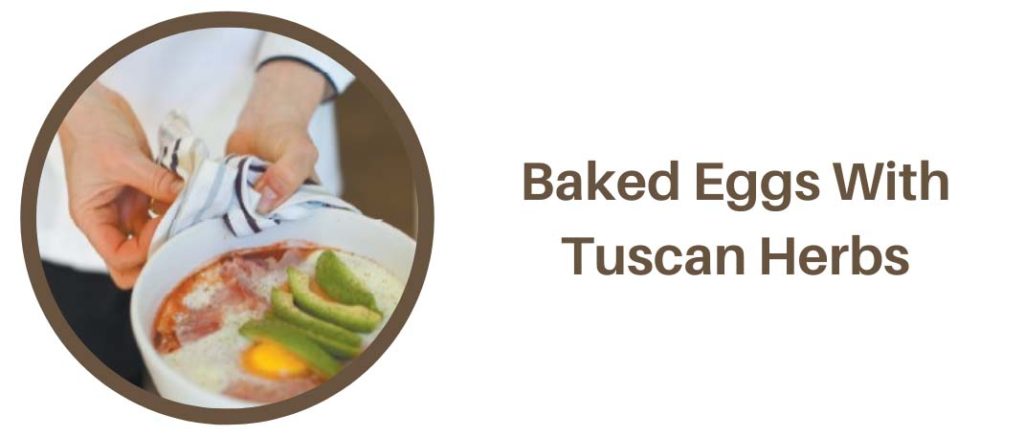
Baked Eggs With Tuscan Herbs
Jo’s tips: One of the best Sunday brunch dishes EVER! I just love the flavours. I use my naturopath’s organic Tuscan herbs (Ovvio), which are amazing.
• 2 eggs |
• Preheat oven to 220 0c. |

JOANNA RUSHTON
Energy Coach
Click here to find a practitioner.
RETURN TO FRONT PAGE
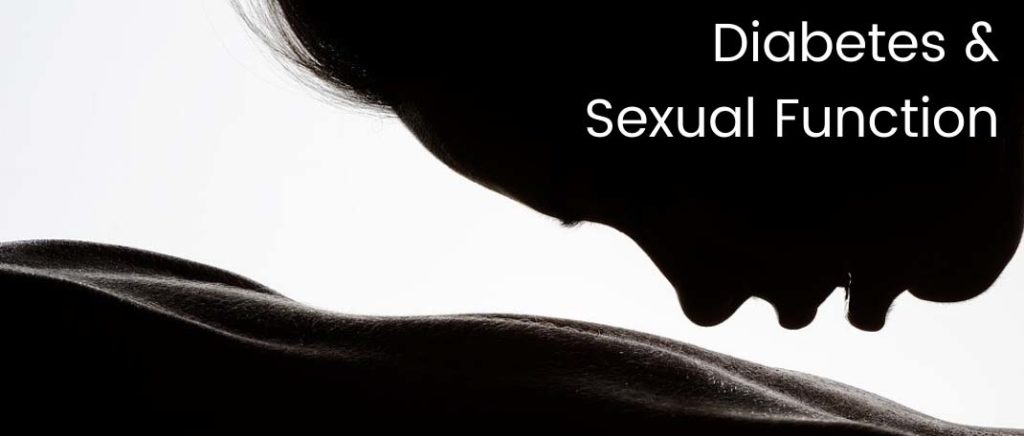
Diabetes And Sexual Function
When I heard that the theme of this month’s publication was about people living with Diabetes, I immediately thought of the many hundreds of men I’ve met during my work on Men’s Health campaigns.
Back then, I was a PR consultant interviewing men and their wives on how they managed their sex lives when there was sexual dysfunction.
Although most of the men were in their 60’s and war veterans, many others were suffering with impotence (incapacity to sustain an erection) due to a particular illness or disease.
Since then I’ve been fascinated with studies into particular disease states and their inherent affect upon our sexuality.
Nowadays as a Tantra Sexuality Practitioner I’ve noticed that more men and women are seeking out Tantra as a means of therapy to not only support erectile dysfunction (ED as it is commonly known) but also as part of disease management and complete lifestyle change.
According to latest figures cited in Diabetes Australia, around 1.7 million people have Diabetes with 280 new cases every day.
Diabetes is the fastest growing chronic condition in Australia, burdening the Australian Healthcare system, costing around $14.6 billion. This disease is increasing at a faster rate than other chronic diseases such as heart disease and cancer.
There are two types of Diabetes; Type 1 Diabetes is an autoimmune condition in which the immune system is activated to destroy the cells in the pancreas which produce insulin and is not linked to modifiable lifestyle factors. There is no cure and it cannot be prevented.
Type 2 Diabetes is a progressive condition in which the body becomes resistant to the normal effects of insulin and/or gradually loses the capacity to produce enough insulin in the pancreas.
Type 2 Diabetes is associated with modifiable lifestyle risk factors and has strong genetic and family related risk factors. As Type 2 Diabetes is often progressive, most people will need oral medications and/or insulin injections in addition to lifestyle changes over time.
I hear the frustration that many of my clients have in relation to conversations with their doctors. Often men say they feel too awkward or embarrassed to ask their doctor for some information about sexual concerns.
Also, given that doctors aren’t psychologists, they don’t always make the time for an in-depth holistic approach incorporating a general chit-chat to put their patients at ease.
Those people who consider Tantra are usually at the end of their tether, jaded when faced with the prospect of taking prescribed ED drugs for the rest of their sexual days and nights; with depression often symptomatic due to fear around failure in the bedroom.
Diabetes And Sexual Function. Everyone wants to have a good sex life right up until the end of life – after all, this is what having a ‘quality of life’ is about.
The link between sexual dysfunctions is often a direct response to the physiology of one’s body and inherent lifestyle, hence why Diabetes often correlates to decline in arousal for both men and women.
Generally from the research I’ve been able to source, it seems that there’s still little known about women, however the problems are often around poor management of their Diabetes which may lead to issues such as frequent bouts of thrush.
They may occasionally present to their doctor with vaginal dryness, pain during sex, not feeling orgasmic due to decrease in sexual desire. When menopausal, women may see a change in their insulin dosage, which could also impact upon their sex lives.
As for men, they usually make up the majority of my clients in accordance to dysfunction because when there are physiological complications arising from Diabetes, there is little blood flow to the penis – hence poor erections make penetration unlikely.
Men with Diabetes may lose some sexual desire when their blood glucose levels are high.
This is where Tantra often helps. A session is centred on the man re-connecting with his energetic body.
Sexual energy is our life source, and the portal for arousal and desire, so although in the physical body an erection may be difficult to sustain – arousal and orgasmic states are most achievable and often more highly satisfying for both the man and his partner.
So, what are some of the other supportive measures that can be taken?
My own studies into men’s health and subsequent experience in psychology, Tantra, body meridian therapy – energy and touch, have shown that in the majority of situations (say 95%) where there is sexual abstinence due to Diabetes, some function is restored through deep, somatic therapeutic practice.
Jacob* has been coming in to see me regularly for over the past three years, and upon writing this I asked for him to comment on what Tantra and change in lifestyle has meant in the management of his Diabetes.
“I have been a type 1 diabetic for over three decades so I have come from the days of urine testing only to continuous glucose monitoring and insulin pump.
I have never let the disease stop me from doing anything – my philosophy is that you live your life with Diabetes, not allow it to run your life. I have run marathons and travelled the world plus work in high-pressured jobs so I live this philosophy.
The one thing I have found though, is that no matter how good my diabetic control, yes it affects my sexual function which has seen a decline in the past 12 years.
I have to say that most diabetic specialists, educators, endocrinologists etc. have no concept of what this means to an individual. Their view seems to be that if you have good blood pressure, eyesight etc. you should be grateful and don’t worry about a sex life.
New technology (pumps, CGMs) is certainly a boon although it requires some understanding, but none of this has focussed on an important lifestyle issue – sex!
Tantra supports my sexuality in a way that sustains arousal and an occasional erection, even though there’s no sexual penetration. I get to feel like a man; I get to feel alive!”
In growing numbers, men and women are rediscovering the key to alleviating and sometimes healing or simply managing ailments is through reconnecting with their bodies.
Often when the situation seems so dire and mainstream medical and pharmaceutical options aren’t completely satisfying, I ask men and women to stop and reflect back over their lives and contemplate where they’ve neglected to confront other areas of dissatisfaction.
We are all more likely to do this when faced with disruption to our sexual, sensual lives. Making love is an act of intimacy so sublime that to be distracted and diseased can impair our sense of self-worth and ruin relationships.
It’s not surprising then that through tantric bodywork and chakra clearing (energy centres within the human body), confidence slowly builds.
When vitality increases, self-esteem and arousal returns. This is inspiring for many men who may suffer in silence, although women (wives, girlfriends and lovers) also feel the impact that ED has upon their partner.
Tantra is a fundamental practice in that it may assist in healing the psyche as well as our physical bodies.
I say to those who are ready to commit to their first session that if keen to reconnect with their body, they will regain a normal sex life; albeit a more passionate and deeply connected one.
By making lifestyle changes such as regular meditation and walking outdoors connecting with nature, the body will respond in kind.
You don’t really need to understand the art and science; merely trust the process as you experience change through touch, breath, mindfulness (approaching life in the moment with positivity) and dedication.
Tantra takes the individual through these practices so that it becomes embodied and part of their consciousness.
As sexual energy is allowed to emerge through the body, connecting from the genitals up into one’s heart-space, there’s an underlying sense of peace and acceptance of the disease state.
This opens up an opportunity to rewire the response to feelings of arousal and connection; creating more meaning in the capacity for one to feel balanced and aligned with other forms of pleasure.
As we become aware of the many modalities supporting humans in their healthcare practices today, it’s exciting to bear witness to the increase of people seeking what I believe is more mainstream preventive healthcare.
Many ancient cultures have upheld such basic shamanic (Earth based, ritualistic) and Tantra practice away from bustling cities, and always with amazing life changing results.
We are increasing our dose of natural remedies once again, because city living is clearly placing an incredible amount of stress not only on our health, but on our relationships and the way we find little time to really honour and embrace our sex lives.
Tantra may take some time to master, but like with anything that challenges us, it’s your body and your sex life that benefits! When I heard that the theme of this month’s publication was about people living with Diabetes, I immediately thought of the many hundreds of men I’ve met during my work on Men’s Health campaigns.
Back then, I was a PR consultant interviewing men and their wives on how they managed their sex lives when there was sexual dysfunction.
Although most of the men were in their 60’s and war veterans, many others were suffering with impotence (incapacity to sustain an erection) due to a particular illness or disease.
Since then I’ve been fascinated with studies into particular disease states and their inherent affect upon our sexuality.
Nowadays as a Tantra Sexuality Practitioner I’ve noticed that more men and women are seeking out Tantra as a means of therapy to not only support erectile dysfunction (ED as it is commonly known) but also as part of disease management and complete lifestyle change.
According to latest figures cited in Diabetes Australia, around 1.7 million people have Diabetes with 280 new cases every day.
Diabetes is the fastest growing chronic condition in Australia, burdening the Australian Healthcare system, costing around $14.6 billion. This disease is increasing at a faster rate than other chronic diseases such as heart disease and cancer.
There are two types of Diabetes; Type 1 Diabetes is an autoimmune condition in which the immune system is activated to destroy the cells in the pancreas which produce insulin and is not linked to modifiable lifestyle factors. There is no cure and it cannot be prevented.
Type 2 Diabetes is a progressive condition in which the body becomes resistant to the normal effects of insulin and/or gradually loses the capacity to produce enough insulin in the pancreas.
Type 2 Diabetes is associated with modifiable lifestyle risk factors and has strong genetic and family related risk factors. As Type 2 Diabetes is often progressive, most people will need oral medications and/or insulin injections in addition to lifestyle changes over time.
I hear the frustration that many of my clients have in relation to conversations with their doctors. Often men say they feel too awkward or embarrassed to ask their doctor for some information about sexual concerns.
Also, given that doctors aren’t psychologists, they don’t always make the time for an in-depth holistic approach incorporating a general chit-chat to put their patients at ease.
Those people who consider Tantra are usually at the end of their tether, jaded when faced with the prospect of taking prescribed ED drugs for the rest of their sexual days and nights; with depression often symptomatic due to fear around failure in the bedroom.
Diabetes And Sexual Function. Everyone wants to have a good sex life right up until the end of life – after all, this is what having a ‘quality of life’ is about.
The link between sexual dysfunctions is often a direct response to the physiology of one’s body and inherent lifestyle, hence why Diabetes often correlates to decline in arousal for both men and women.
Generally from the research I’ve been able to source, it seems that there’s still little known about women, however the problems are often around poor management of their Diabetes which may lead to issues such as frequent bouts of thrush.
They may occasionally present to their doctor with vaginal dryness, pain during sex, not feeling orgasmic due to decrease in sexual desire. When menopausal, women may see a change in their insulin dosage, which could also impact upon their sex lives.
As for men, they usually make up the majority of my clients in accordance to dysfunction because when there are physiological complications arising from Diabetes, there is little blood flow to the penis – hence poor erections make penetration unlikely.
Men with Diabetes may lose some sexual desire when their blood glucose levels are high.
This is where Tantra often helps. A session is centred on the man re-connecting with his energetic body.
Sexual energy is our life source, and the portal for arousal and desire, so although in the physical body an erection may be difficult to sustain – arousal and orgasmic states are most achievable and often more highly satisfying for both the man and his partner.
So, what are some of the other supportive measures that can be taken?
My own studies into men’s health and subsequent experience in psychology, Tantra, body meridian therapy – energy and touch, have shown that in the majority of situations (say 95%) where there is sexual abstinence due to Diabetes, some function is restored through deep, somatic therapeutic practice.
Jacob* has been coming in to see me regularly for over the past three years, and upon writing this I asked for him to comment on what Tantra and change in lifestyle has meant in the management of his Diabetes.
“I have been a type 1 diabetic for over three decades so I have come from the days of urine testing only to continuous glucose monitoring and insulin pump.
I have never let the disease stop me from doing anything – my philosophy is that you live your life with Diabetes, not allow it to run your life. I have run marathons and travelled the world plus work in high-pressured jobs so I live this philosophy.
The one thing I have found though, is that no matter how good my diabetic control, yes it affects my sexual function which has seen a decline in the past 12 years.
I have to say that most diabetic specialists, educators, endocrinologists etc. have no concept of what this means to an individual. Their view seems to be that if you have good blood pressure, eyesight etc. you should be grateful and don’t worry about a sex life.
New technology (pumps, CGMs) is certainly a boon although it requires some understanding, but none of this has focussed on an important lifestyle issue – sex!
Tantra supports my sexuality in a way that sustains arousal and an occasional erection, even though there’s no sexual penetration. I get to feel like a man; I get to feel alive!”
In growing numbers, men and women are rediscovering the key to alleviating and sometimes healing or simply managing ailments is through reconnecting with their bodies.
Often when the situation seems so dire and mainstream medical and pharmaceutical options aren’t completely satisfying, I ask men and women to stop and reflect back over their lives and contemplate where they’ve neglected to confront other areas of dissatisfaction.
We are all more likely to do this when faced with disruption to our sexual, sensual lives. Making love is an act of intimacy so sublime that to be distracted and diseased can impair our sense of self-worth and ruin relationships.
It’s not surprising then that through tantric bodywork and chakra clearing (energy centres within the human body), confidence slowly builds.
When vitality increases, self-esteem and arousal returns. This is inspiring for many men who may suffer in silence, although women (wives, girlfriends and lovers) also feel the impact that ED has upon their partner.
Tantra is a fundamental practice in that it may assist in healing the psyche as well as our physical bodies.
I say to those who are ready to commit to their first session that if keen to reconnect with their body, they will regain a normal sex life; albeit a more passionate and deeply connected one.
By making lifestyle changes such as regular meditation and walking outdoors connecting with nature, the body will respond in kind.
You don’t really need to understand the art and science; merely trust the process as you experience change through touch, breath, mindfulness (approaching life in the moment with positivity) and dedication.
Tantra takes the individual through these practices so that it becomes embodied and part of their consciousness.
As sexual energy is allowed to emerge through the body, connecting from the genitals up into one’s heart-space, there’s an underlying sense of peace and acceptance of the disease state.
This opens up an opportunity to rewire the response to feelings of arousal and connection; creating more meaning in the capacity for one to feel balanced and aligned with other forms of pleasure.
As we become aware of the many modalities supporting humans in their healthcare practices today, it’s exciting to bear witness to the increase of people seeking what I believe is more mainstream preventive healthcare.
Many ancient cultures have upheld such basic shamanic (Earth based, ritualistic) and Tantra practice away from bustling cities, and always with amazing life changing results.
We are increasing our dose of natural remedies once again, because city living is clearly placing an incredible amount of stress not only on our health, but on our relationships and the way we find little time to really honour and embrace our sex lives.
Tantra may take some time to master, but like with anything that challenges us, it’s your body and your sex life that benefits!
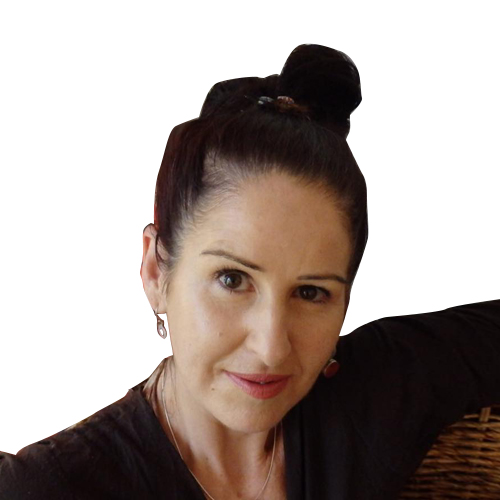
TARYN HARVEY
Sacred Sexuality Coach
Click here to find a practitioner.
RETURN TO FRONT PAGE

Living With Diabetes
Living with Diabetes is a huge challenge in today’s society. In fact Diabetes Australia reports 280 Australians develop Diabetes every day. That’s one person every five minutes which is about 4% of the population or 1.7 million people.
Diabetes is the fastest growing chronic condition in Australia, increasing at a faster rate than other chronic diseases such as heart disease and cancer.
In the USA diagnosed Diabetes is a total 29.1 million people or 9.3% of the population have Diabetes and undiagnosed is 8.1 million people or 27.8% of people with Diabetes are undiagnosed. That’s almost 78,000 people a day!
Worldwide, Diabetes caused 4.9 million deaths in 2014 which means every seven seconds a person dies from Diabetes.
Why? There are quite a few contributors to this number however this article is from a personal perspective and looks at the emotional and energetic components as I later discovered through kinesiology.
Being diagnosed with Diabetes at 12 years old is what introduced me to kinesiology and why I became Australia’s youngest qualified kinesiologist at the age of 18.
Let me start with the background and lead up to how I believe it came about.
Background & Environment
My family emigrated from Czech Republic to Australia under very stressful circumstances illegally fleeing a communist regime in 1983. My parents wanted to create a future with choice for their children that wouldn’t be suppressed by the communist regime.
Both professional musicians, life in Australia started with them distributing newspapers, whilst looking for permanent position music teacher jobs.
Prioritising survival and future ambitions, they wanted my brother and I to have choices they didn’t believe we could have in Czech Republic which meant they were not home much.
Home life was quite stressful and I believe a combination of being looked after by my brother (7 years older) who abused his authority, irregular eating patterns, inconsistent routines, pressure in ballet and lack of family support led to Diabetes.
Along with the adjustment of being a “different” kid in school, I also never quite adjusted well to bullying and the language barriers in the first few years.
It wasn’t until symptoms like excessive urination, thirst and weight-loss became so persistent that I urged my parents to take me to the doctor.
We put it off so long but my mother said she’ll take me as soon as the school holidays hit, until one Saturday night just before my 13th birthday I ended up in emergency intensive care after vomiting from excessive long term ketosis.
Doctors told me that I was just one hour short of being in a major coma that may not have seen me survive it. My situation had gone so far and could have been prevented if detected earlier.
The diagnosis was an opportunity for my whole family to come back into balance as a family unit and to create much healthier lifestyle such as regular eating patterns and a much healthier diet.
We also began to explore TM meditation as a family meditating daily together for years and things started to heal. My parents were so desperate to see my health reverse and so was I.
My mother was so dedicated to my needs and introduced me to a Kinesiologist. The results we got from kinesiology inspired me to learn touch for health at 14 years old. After more courses I started practicing on everyone and anyone I could.
Within the first few months of seeing a kinesiologist I was definitely back on track, reduced my insulin and was obsessed with learning more and more about the body, energy and how I can help others heal.
Emotional & Behavioral Contributors To Diabetes
Outside of the poor choices people make like poor eating habits, no exercise, excess sugar in the diet and alcohol consumption, I believe there is an emotional and energetic cause in every illness and I’ve discovered through my own health and working with clients these factors below:
Anger & Resentment
In about 20 years of clinical practice and self-development I discovered that the energetic nature of Diabetes is all about not being able to process anger and resentment.
Not having a healthy relationship with boundaries for self-care or creating allowable sources of sweetness and nourishment into life.
Hence “loss of sweetness” in life is common. Inability to “stomach” or “digest” these emotions, (from a kinesiology perspective) live in the gall bladder and liver organs and wood element.
The result is unused, unexpressed energy being shunted to other organs and meridians. In my case the earth element which is the stomach and spleen element suffered the blows from the liver and gallbladder suppressed energy.
I was so disconnected with any anger or rage but knew that it was there very deep down yet I had no way of accessing it. I learned how to hide and suppress it so much so that I could not identify with it at all.
Unless anger and resentment is appropriately expressed the body cannot heal. I had no relationship with either. I learned that my mother and her father had major issues with anger and expressing it.
I was so angry that my parents left me with a terrible brother and took us to a country where we had no-one. I was devastated to leave my grandmother behind. I never felt these emotions at the time.
Need For Approval
I became so good at suppressing myself. Why? I was very suppressed by my brother and grew up with an unhealthy need for his approval.
All I cared about was whether he liked me or not and my self-esteem was caught up and scarred with his opinion of who he said I was which at the time was ugly and nothing.
Today he is a very different person, however, that damage was done.
Being bullied at school, I never felt good enough in any situation so my need for approval was also very exposed there.
Take On Too Much Responsibility
I also discovered that juvenile Diabetes can be the pattern of children who take or are given too much responsibility at an early age or “parent” the parents or other siblings.
I wanted so desperately to please and be loved that I only wanted to help my parents and not cause more stress.
They already suffered greatly with my brother who did not handle our emigration well. He turned to drugs, stealing and all sorts of other trouble. I witnessed regular screaming matches and abuse from him toward my parents.
He would then take some of that out on me. I ended up just trying to look after everyone and was always “in the middle”.
I never really learned how to take care of me as I was over empathetic and always concerned with trying to make everything better at home.
It is absolutely essential to learn how to put the self first and dare to nurture and nourish the self, none of which was modelled nor something I knew how to do.
Self Esteem
As mentioned earlier my self-esteem was not healthy. I developed secondary issues and an eating disorder in my 20’s which actually ruined my health even more.
I developed another immune problem, a hypothyroid problem where I was no longer producing T4 cells. I started to gain a lot of weight and was overweight.
That’s when I learned I had to listen to myself. I asked the doctors to give me 6 weeks to turn my health around before putting me on lifelong medication as I was willing to do anything not to have to take more drugs for the rest of my life.
I made some choices about lifestyle and negative emotions and people I was keeping company with. I started to meditate and my thyroid rebalanced. I stopped bending over backwards for everyone else. I recognised that I was over eating because I was looking for energy. I wanted back the energy I was giving others.
Six weeks later my T4 count was back to normal and I have never had a thyroid problem since. It took a few years to lose the weight, however, that happened after I integrated deep belly breathing and breath work into my life.
Coming Back To Balance
Diabetes is all about keeping in balance and kinesiology has helped me understand and identify what is going on. The key is to keep very balanced.
• I believe that self-love, finding sweetness and allowable sources of nourishment are essential in balancing life with Diabetes
• Learn how to take courageous responsibility for the self, regardless of what others need is essential
• Creating a healthy relationship with anger and frustration. Use it as a guide to show you that perhaps your boundaries or values have been compromised
• Practice healthy boundaries and learn how to say no instead of being a people pleaser
• Meet our own needs for nourishment
• Learn how to ask for help, your needs and what you want
• Find a kinesiologist who can help you understand your body
• Learn to breathe
• Meditate or create time for reflection and just listen to the inner voice
• Get as much body work as possible and ground yourself. The trauma is always in the body and needs release.
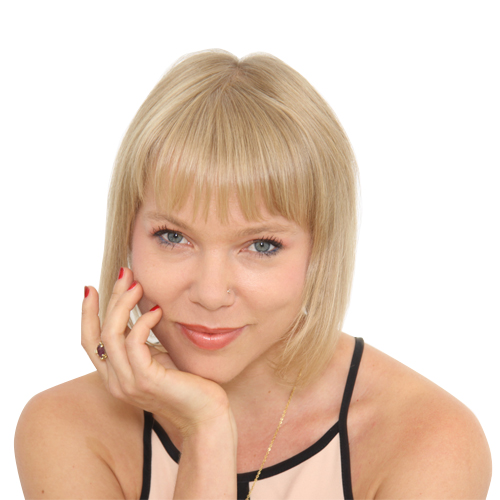
ANI NERADILKOVA
Kinesiologist
Click here to find a practitioner.
RETURN TO FRONT PAGE
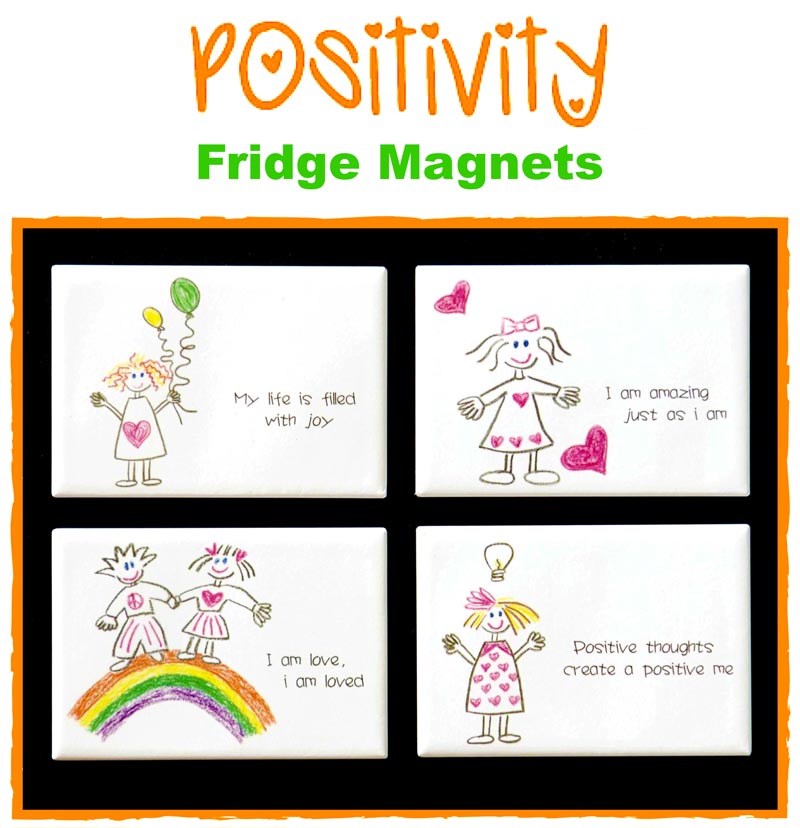 The Magnets Come In A Set Of 4 |
Positivity magnets were designed to inspire you on a daily basis to live your BEST LIFE and Every time you see them, (when you go to the fridge) they will inspire you to live a healthier life. The Magnets Will Inspire: · YOUR MIND – to think healthy thoughts – Positive thoughts create positive me We believe life is about having FUN and being as positive as possible. |
| GET IT HERE FOR AU$20 INCLUDING POSTAGE |
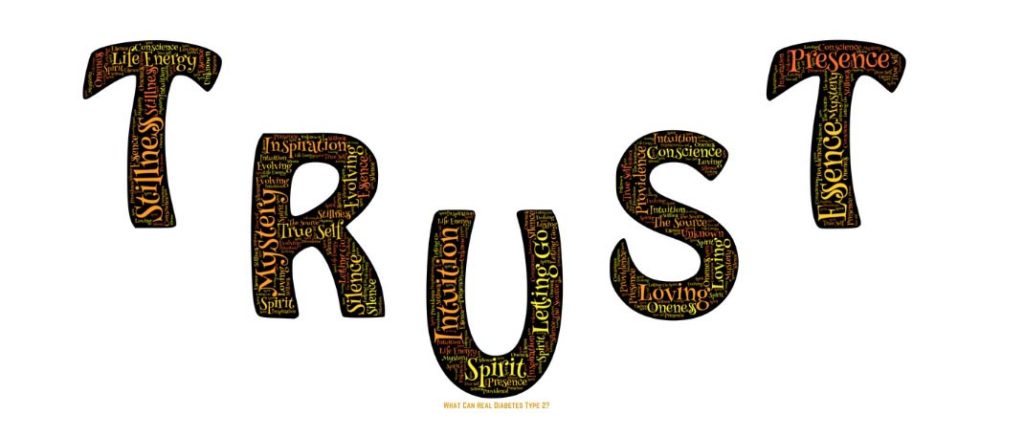
What Can Heal Diabetes Type 2?
Having recently read Louise’ Hay’s definition of Diabetes, I was intrigued by her emotional definition of the disease and recommended affirmation.
I then took her definition further and applied it to The Greatness Principle and reflected on what would a person’s life and relationships look like if they were living with Diabetes Type 2.
(From Louise Hay’s “Heal Your Body”: “Diabetes (Hyperglycemia, Mellitus) – Probable Cause: Longing for what might have been. A great need to control.
Deep sorrow. No sweetness left. Affirmation: This moment is filled with joy. I now choose to experience the sweetness of today)
Longing For What Might Have Been
When people are in the headspace of longing for what might have been, they are distant, not fully engaged in life as they are sad about the future they would, should, could have had.
They are permanently distracted in their minds, running the projected future that they are so attached to and so connected with. What does that do to a person and their most valuable relationships around them? It makes them hard to connect with.
It’s hard to give support to these people as they are constantly rejecting support, encouragement or ideas for a new life or circumstances because they deeply lament for what they feel they lost and are not interested in creating a new future.
A Great Need To Control
Simply put, control kills intimacy. When people are in control mode, only surface level relationships and connection is possible.
Yes, people will be in their life because they are either a) related and can manage your need for control b) they work for you so accept that’s what you do at work. Unfortunately though, the great need for control makes the ‘controller’ become not safe to open up with.
People don’t share their deep secrets or personal things about themselves to controlling people as that level of sharing and vulnerability could be used against them in the future when the controller wants to control!
Deep Sorrow
People that are experiencing deep sorrow feel very sad, lonely, and disconnected and also a little lost. Most of us have had something happen in our life where we have experienced deep sorrow.
It’s ok to experience it, however, it’s not ok to LIVE in deep sorrow. I see this many times in my work where a business leader has completely and utterly failed in their work/business and they can’t get over it.
They live in their failure, their deep loss (financially, emotionally, spiritually and now with diabetes, physically).
I’ve also seen it at a personal level with clients, for example, after 15 years of marriage, the husband, who was deeply sad about the wife he had chosen, (she was an angry woman who verbally attacked him constantly over those 15 years, whom he loved with all of his heart and he didn’t want to divorce) developed diabetes in his late 30s.
He lived in an internal world of deep sorrow instead of enjoying the marriage and life with his wife.
No Sweetness Left
One of the coping mechanisms for people who find no joy or sweetness in any corner of the world is that they find things that make them feel good such as food, alcohol or drugs (life’s artificial sweeteners).
Being very overweight, having addictions to alcohol or drugs can create a behaviour, attitude and world that can be very isolating, difficult and lonely. When that’s going on, the willingness to be open and vulnerable with others is very low.
So with Diabetes Type 2, there is breakdown and illness in the cells and inside the body, as well as fair amount of breakdown in the person’s ability to relate and connection to the outside world.
So What Can Heal Diabetes Type 2?
Yes, this is actually a good news article… and that is that Diabetes Type 2 can be overcome and it doesn’t have to be a lifelong curse. What’s the solution?
Are you ready… one must stop being a lone wolf, to stop trying to dictate how everything in the world must happen… it’s about trusting yourself, your life and others and to stop being so afraid of your potential and your future.
If you, or if someone that you know has Diabetes Type 2, then get excited because there is help and that is… COURAGE. Courage to dream a new life, courage to change your life and courage to ask for and ACCEPT support.
With the work I have done in the last 17 years with leaders in business and life, it is teaching and inspiring people how to build a circle of support so they can be great.
If you have the courage to stop lamenting your past, being sad, being a big control freak and using artificial life sweeteners like sugar, alcohol or drugs, then you can have GREAT health, a GREAT Life and a GREAT experience of being on the planet.
It comes down to having compelling vision for your life and then selecting the right people to support you until you have it.

JEN HARWOOD
Community Builder
Click here to find a practitioner.
RETURN TO FRONT PAGE
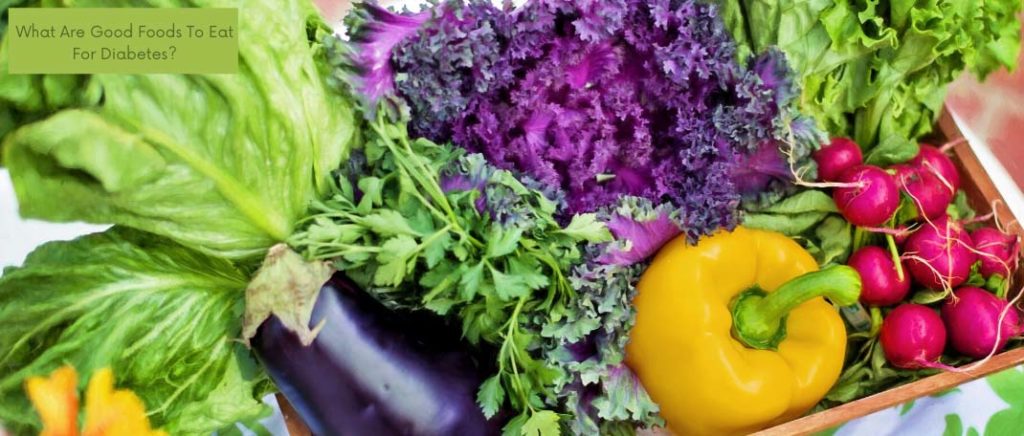
Food For Diabetics. What Are Good Foods To Eat For Diabetes?
Estimates and projections suggest an epidemic expansion of Diabetes incidence. There are about 347 million people worldwide who have Diabetes. This Non-communicable disease (NCDs) according to the WHO is increasing at alarming levels globally.
Diabetes is predicted to become the 7th leading cause of death in the world by the year 2030.
There is unequivocal evidence that unhealthy food and non-alcoholic beverage marketing is related to obesity. More than 2 in 3 adults are considered to be overweight or obese.
We are no closer to a cure for Diabetes, although this disease is at epidemic levels and millions of dollars are spent in research.
Although there is good evidence that a large proportion of cases of Diabetes and its complications can be prevented by a healthy diet, regular physical activity, maintaining a normal body weight and avoiding tobacco, this evidence is not widely implemented.
People with Diabetes, no matter what type, have too much glucose in the blood, although the causes may differ. Glucose is vital to health because it’s an important source of energy for the cells that make up the muscles and tissues. It’s also the brain’s main source of fuel.
Too much or too little glucose is dangerous. So, in order to keep glucose levels in the blood in a healthy range, the hormone insulin is produced in Beta Cells in the pancreas.
For people with Diabetes, the glucose stays in the blood instead of being turned into energy. This is why blood glucose levels are higher in people with Diabetes. High blood glucose can cause short and long term damage to the body.
When weight is gained hormones produced by the extra body fat start to need more insulin to process blood glucose effectively. Eventually the need for insulin may be so high that the pancreas cannot supply enough of it. The result is Diabetes.
There are different types of Diabetes; all types are complex and serious. The three main types of Diabetes are Type 1, Type 2 and Gestational Diabetes. Type 2 accounts for around 90% of all Diabetes worldwide.
The combination of massive changes to diet, the quality of the food that lacks essential nutrients due to depleted soils and the food supply, combined with massive changes to physical activity with more sedentary work and less activity, means most populations are seeing more Type 2 Diabetes.
Women with Gestational Diabetes are at an increased risk of complications during pregnancy and at delivery. They are also at increased risk of Type 2 Diabetes in the future.
Symptoms
Symptoms include excessive excretion of urine (polyuria), thirst (polydipsia), constant hunger, weight loss, vision changes and fatigue. These symptoms may occur suddenly.
What Are Common Consequences Of Diabetes?
Over time, Diabetes can damage the heart, blood vessels, eyes, kidneys, and nerves. Diabetes is a leading cause of blindness, amputation and kidney failure.
So What Can You Do?
Even though there’s no Diabetes cure, Diabetes can be treated and controlled, and some people may go into remission.
For a person with Diabetes, the main focus of treatment is to control the amount of glucose in the body so that blood sugar levels stay as close to normal as possible.
People with Type 1 Diabetes need insulin shots as part of their care plan to control their blood sugar levels. Some people with Type 2 Diabetes can control their blood sugar levels with a healthy diet and exercise.
However, some people with Type 2 Diabetes will need to include Diabetes pills, insulin shots, or both in their Diabetes care plans.
Change is challenging, but being diagnosed with Diabetes that requires a particular change in lifestyle and in dietary habits can be challenging for some individuals. For the change requires an acceptance of the situation firstly.
The purpose of making changes is to add pleasure to your life, so see what changes you can make today that will add long term benefits to your life. This is empowering yourself. There are simple things you can do daily, that make a big difference.
Healthy eating does not mean depriving yourself of the foods you love or staying unrealistically thin, but rather about developing a well-balanced, satisfying relationship with food. Your food choices have the biggest impact when it comes to Diabetes.
But what does eating right for Diabetes mean? You may be surprised to hear that your nutritional needs are virtually the same everyone else: no special foods or complicated diets are necessary.
A Diabetes diet is simply a healthy eating plan that is high in nutrients, low in fat, and moderate in calories. It is a healthy diet for anyone!
The only difference is that a person with Diabetes needs to pay more attention to some of the food choices, most notably the carbohydrates eaten.
A healthy diet along with an appropriate exercise plan is crucial for an enhanced primary health plan in Diabetes management.
Consuming a small serve of low glycaemic index (GI) carbohydrate based food at each meal, eating regularly throughout the day (to keep blood glucose levels consistent), focusing on foods low in fats (in particular, saturated fats) to reduce heart disease risk, including fibre-rich foods, and drinking enough water are the main areas to focus on.
Most people with Type 2 Diabetes need to reduce their weight (body fat), hence overall kilojoule balance is also an important factor.
The key to controlling blood sugar with diet is controlling the portions and timing of the meals. Eat a wide variety of delicious foods as a diabetic from each of the food groups.
Starches
A diabetic must control the total amount of carbohydrates eaten. Carbohydrate-containing foods raise blood sugars.
Starches act as one of the primary sources of carbohydrates in the diet. Limit your daily intake to six to 11 servings based on your calorie needs, according to the National Institute of Diabetes and Digestive and Kidney Disorders, or NIDDK.
Eating more high-fiber starches can help you maintain better control over your blood sugar. Fiber in food slows digestion and the release of sugar into the bloodstream.
Delicious diabetic starch choices include whole wheat bread and pasta, brown rice, bulgur wheat, millet, barley, rye, whole-grain cereal, corn, potatoes, winter squash, and popcorn. Legumes: Beans (black, pinto, kidney, garbanzo, white, etc.), lentils, and peas.
Fruit
Fruits also provide carbohydrates. Limit intake to two to four servings a day, according to NIDDK. Fruits like oranges, grapefruit, oranges, lemons, berries, melons and sweet limes have properties like insulin, which help to control blood sugar levels naturally.
Include apples, oranges, pineapple, mango, bananas, plums, peaches, nectarines, berries, melons, unsweetened canned fruit, unsweetened dried fruit and fruit juice.
Eating more whole fruit instead of juice will help better manage blood sugar because of the fiber content.
Milk & Yogurt
In addition being sources of protein and calcium, milk and yogurt also contain carbohydrates, limit intake to two servings a day. Low-fat and nonfat milk and yogurt items make healthier choices.
Too much saturated fat in the diet increases blood cholesterol levels and risk of heart disease. Milk and yogurt choices include skim milk, 1 percent milk and nonfat, sugar-free Greek yogurt.
Nuts
Include a handful of nuts to the diet and control blood glucose levels. Although high in calories, nuts like almonds, peanuts and walnuts are good sources of fiber, vitamin E and magnesium, which regulate blood sugar levels efficiently.
Nuts also contain healthy fats that are good for heart health in diabetics.
Sweets & Desserts
Stevia a naturally sweet plant is shown to be an excellent substitute of sugar in diabetics. It stabilizes blood sugar levels by increasing insulin resistance, inhibiting absorption of glucose and promoting health of the pancreas.
When adding a sweet or dessert to the diet, it should replace another carbohydrate-containing food. Eat the sweet with a meal to prevent surges in blood sugar.
Non-Starchy Vegetables
Non-starchy delicious vegetables are low-calorie, nutrient-dense foods include leafy greens, carrots, radishes, cucumbers, eggplant, onions, peppers, zucchini, celery, broccoli, cauliflower, cabbage, spinach and green beans.
Meat & Meat Substitutes
Meat and meat substitutes do not contain carbohydrates, but provide protein, zinc and iron. Limit intake to 110 g to 200 g a day, according to NIDDK. Meats can also be a source of saturated fat, and lean meats make healthier choices.
Delicious lean meat choices include skinless poultry, fish, shellfish, ham, pork chops, top sirloin and lean ground meat. Delicious low-fat meat substitutes include egg whites, egg substitutes, tofu, low-fat cheese and nonfat and low-fat cottage cheese.
Saturated Fat
Limit saturated fat is found in animal foods like fatty meat, milk, butter and cheese. Vegetable fats that are saturated include palm oil (found in solid cooking fats, snack foods or convenience foods) and coconut products such as copha, coconut milk or cream.
Avoid processed, fried and battered foods. Avoid the use of processed deli meats and sausages.
Herbs & Spices
Add herbs and spices for flavour, variety and health benefits to meals. Allicin in garlic and onions has an anti-diabetic effect.
Adding about half a teaspoon of cinnamon per day can result in significant improvement in blood sugar, cholesterol, and triglyceride levels as cinnamon improves insulin sensitivity.
Holy basil in people with Type 2 Diabetes showed a positive effect on fasting blood sugar and on blood sugar following a meal. Gingers gingerols, can increase uptake of glucose into muscle cells without using insulin, and may therefore assist in the management of high blood sugar levels.
Trigonelline in fenugreek seeds is known to reduce blood sugar level. Curcumin, found in turmeric, has been shown to boost blood sugar control. Both Asian and American ginseng may help lower blood sugar in people with Diabetes.
Lifestyle Changes
There is good news you can make a big difference with healthy lifestyle changes. The most important thing you can do for your health is to lose weight, this is easier if exercise is undertaken. For good health, about 30 minutes of exercise every day.
If this is not possible, then this time can be divided in 3 x 10 minutes sessions. Aim for moderate intensity. This means you should still be able to talk as you exercise without becoming breathless. You can break up exercise throughout the day.
Here are some suggestions: Walking, Water Aerobics, Swimming, Dancing, Gardening, Golfing, Weight Training, and Tai Chi. Reduce sedentary behaviours by being active in as many ways as possible throughout the day.
Small Changes Equal Big Results
It’s not too late to make a positive change. Eating right and physical activity is vital to control Diabetes. The bottom line is that you have more control over your health than you think.
• Diabetes Australia, https://www.diabetesaustralia.com.au/ Diabetes Australia, 2015 |

IRENE VERVLIET
Naturopathic Doctor
Click here to find a practitioner.
RETURN TO FRONT PAGE
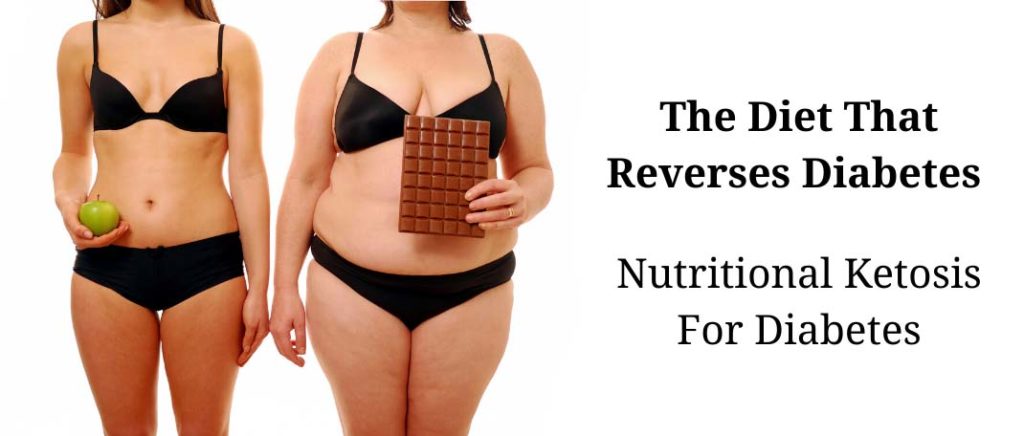
The Diet That Reverses Diabetes. Nutritional Ketosis For Diabetes
The most important way to manage diabetes is through proper nutrition; however, if you want to reverse this disease and reduce or even eliminate diabetes medications, then it could be advisable to avoid the American Diabetes Association dietary guidelines, and turn away from commonly prescribed diets that have made diabetes much, much worse.
A growing body of scientific data is pointing towards a diet that has the potential to reverse Type 2 Diabetes, and even reduce drug dependence for Type 1 Diabetes: The Ketogenic Diet.
More than just a diet, using fat to fuel the body instead of carbohydrates has scientifically proven to improve biomarkers of age, optimise weight loss and reverse many chronic diseases, including some cancers.
Not only does the ketogenic diet offer a potential cure for diabesity (diabetes + obesity), the positive side-effects of this lifestyle choice are numerous.
Big claims? Indeed, however, new long-term research into this way of eating is shattering old-school paradigms on nutrition and is changing the way we view and approach our modern diet.
The ketogenic diet has been around since the beginning of time and is an important part of our evolution, without the ability to burn fat instead of glucose as fuel, many people would have starved to death. Ketosis refers to the fuel source your body survives on.
The standard western supermarket diet is high in carbohydrates and as your body absorbs these carbohydrates they are converted into glucose (sugar), these glucose molecules are then transported into cells by insulin to fuel each cell in your body.
When we reduce our carbohydrate intake to a minimum (usually 5 to 10% of daily caloric intake) there is no longer enough glucose to fuel the body, so the body very cleverly goes looking for a second fuel source.
It turns to stored fat cells and/or dietary fat, and the liver converts this fat into ketones. Ketones then become the primary fuel for each cell in your body.
This is called fat-adaptation, and the clinical term for this is to say you are in a ketogenic state, or your body is in nutritional ketosis. And the side-effects can be extremely positive.
What Is Nutritional Ketosis?
The term nutritional ketosis was coined by Dr. Stephen D. Phinney some thirty years ago to clarify confusion, particularly amongst physicians, between ketosis induced by carbohydrate restriction and ketosis caused by the absence of insulin in Type 1 diabetics, which leads to ketoacidosis.
Ketones in extremely high levels can be a toxic byproduct of fat metabolism; however, in very low doses they are also a useful substrate for healthy fat metabolism and weight loss.
There is no more risk of ketoacidosis in healthy individuals by inducing nutritional ketosis, as there is inducing diabetic coma in healthy individuals. A healthy body will keep these levels in a healthy range.
Some argue this is humans’ natural state; babies are born in ketosis and breast milk is ketogenic. Paleolithic man did not have access to grains and sugars like we do today and their natural diet would have been low in carb (carbohydrates) and higher fat.
It is our modern diet of high grains and sugars that have led to higher glucose levels and insulin. When carbohydrate intake is restricted, the need for insulin reduces and it is much easier to manage blood sugar levels.
Nutritional Ketosis For Diabetes?
A comparison of the American Diabetic Association diet (which is a lower calorie, low fat, moderate carbohydrate diet) to a low-carb, high-fat ketogenic diet took a group of participants, with either Type 2 Diabetes or insulin resistance (pre Type 2 diabetes), and then randomly assigned individuals to one of these two dietary protocols over a three month period.
After three months the assessment determined there to be a significant difference with the low-carb ketogenic group demonstrating a significant drop in their hemoglobin A1C or overall blood sugar reading. And a far greater portion of the low-carb ketogenic group (44% vs 11%) were able to discontinue one or more of their diabetes medications and lost 5.5 kg compared to 2.6 kg.
Another study published in the Journal of Nutrition and Metabolism in 2005 followed 21 participants with Type 2 Diabetes over a 16 week period on a low-carb ketogenic diet. The study concluded that the low-carb ketogenic diet improved glycemic control in patients with Type 2 Diabetes to a point that diabetes medications were discontinued or reduced in most participants.
So yes, there is a lot of research into the effects of the ketogenic diet for diabetes to prove it is worth trying. Even for Type 1 Diabetes. My advice? While the ketogenic diet has such a positive impact on blood glucose and insulin levels, it is still important to be under close medical supervision as your requirement for medications can change very quickly. So ensure you seek thorough advice by an expert in this field.
Neurological Benefits
The ketogenic way of eating also provides enormous levels of satiety (fullness after a meal), as the body becomes deeply nourished when we eat this way and therefore our brain isn’t constantly looking for nourishment. High carb diets make you hungry.
Another benefit is that obtaining a ketogenic state optimises brain function. In fact, this diet has proven to reduce symptoms of neurological disorders such as Parkinson’s disease, Alzheimer’s disease, brain cancer, autism and multiple sclerosis.
It has long been used to treat childhood epilepsy; ketosis has been clinically proven to significantly reduce seizures.
The Paradigm Shift Away From Low Fat Diets
It is obvious to see that the low-fat/high-carb diet has truly been one of the biggest dietary blunders in history; it has led to unprecedented rates of obesity, heart disease and chronic illness. Simply put — we were wrong!
Fat doesn’t make you fat or unhealthy — carbohydrate (sugar) does.
For most of us, the suggestion that high-fat diets may actually be healthy seems totally contradictory to everything we’ve been told about nutrition, as experts have endorsed low-fat/high-carb for over 60 years.
But it’s time every health professional took the time to research thoroughly the evidence that has been brought to light. It takes a brave clinician indeed to change their opinion and admit we all had it very wrong, but we must.
There Is Hope
Sweden has become the first country to officially reject the low-fat/high-carb diet and has publicly announced new dietary guidelines to support low-carb/high-fat nutrition advice.
The Swedish Council on Health Technology Assessment provided a two-year study analysing 16,000 nutrition studies published through May 2013. So there is hope that other countries may eventually change.
The first to lead will be countries that allow science to prevail over politics. However, it is a known fact that currently politics wins over science!
The Cholesterol Myth
The leading question is “what about cholesterol, won’t this cause heart disease and cause heart attacks?” While this is still a mainstream attitude by most health professionals, the answer is no, dietary cholesterol has no impact on the body’s cholesterol levels.
So next time your doctor suggests you lower your butter intake, ask them if they, in fact, mean you should lower your sugar intake.
The cholesterol myth is that dietary fat causes heart disease; however, this is a hypothesis that to this day has never been scientifically validated!
Ketosis For Weight Loss
Without being aware, most people today have become carb sensitive. Our blood sugar levels are on a constant rollercoaster resulting in highs and lows in energy; if you are a mid-afternoon napper or snacker, you will know what I mean.
But high blood sugar also contributes to many chronic degenerative diseases, including heart disease. Other symptoms of carbohydrate intolerance are: bloating, sleepiness after eating, physical and mental fatigue, depression and fat storage.
Due to a life on the high-carb diet, carb sensitivity is now a common problem. The ketogenic diet provides the solution.
Over the past decade I have spent 80% of my time in nutritional ketosis; I am living proof that a long-term ketogenic diet works. It is while I am in this fat-adapted state that I perform at my absolute best.
When I started I was insulin resistant with high LDL cholesterol, chronically high cortisol and my weight constantly fluctuated. I craved sugars and carbs and would fall asleep mid-afternoon.
Over a decade later after my lifestyle change, I have a BMI of 21 and a biological age of a woman 10 years younger, all my biomarkers have normalised and for a woman in her forties my weight hasn’t fluctuated more than a few kilos in years.
So if you are struggling to maintain your energy levels across the day, or struggling with your weight, consult an expert in nutritional ketosis to see if it’s right for you.
After coaching thousands of people from all around the world through these types of programmes, I personally believe this approach to eating is valid of investigation to see if it’s right for you.
At my clinic we offer either online self-taught programmes or professional eight week coaching packages whereby almost daily contact is offered, so clients stay both motivated and inspired to achieve their goals.
There is a healthy way to approach this diet and a very unhealthy way, so ensuring your body gets the nutrients it requires while on this protocol is the key for long-term success.

DEBORAH MURTAGH
Wholefood Expert
Click here to find a practitioner.
RETURN TO FRONT PAGE

Choco Coconut Energy Truffles
Ido not know where to begin raving about how healthy these are. They are also a raw food, so all the nutrients and enzymes are not destroyed during cooking. Try these choco coconut energy truffles for yourself.
They are so easy to make and make the best alternative to sugary muesli bars and best of all, children love them and they are gluten free!
• 1 cup almonds * |
1. Place all the ingredients into a food processor and whizz until fine. Add more dates if it doesn’t form a ball when a teaspoon full does not hold when squeezed together. 2. Once whizzed well, take spoonfuls and roll and press into a balls. Roll and squeeze coconut on the outside to coat and refrigerate. 3. Cover and refrigerate for at least an hour, or overnight. 4. Store in container in fridge with baking paper between fingers or freeze for long term storage. |
Almonds should ideally be soaked in water with a dash of salt overnight, then drained well, dried in a clean tea towel. Then dehydrate them in a low fan oven, below 50ºC until dry and crisp. Once well dried store almonds in glass jars.

DEBORAH MURTAGH
Wholefood Expert
Click here to find a practitioner.
RETURN TO FRONT PAGE
|

Shamanic Healing – Going Deep, Deeper, Deepest
It is a real pleasure to have been invited by Sharon White to be one of the contributors to Holistic Living Magazine, and connect with all the readers – the reason for Holistic Living.
While this issue focuses on a Diabetes theme, I am going to take a broader, more holistic approach to my first article here.
I intent to speak about shamanic healing arts as I have been taught them and how and when they are best used to provide deep healing in ways most other medicines, Western or energetic – cannot.
I will touch on ways shamanic healing can be used to bring healing to major diseases, like Diabetes, as well. And, finally, I will share a little about my work and myself so you know a little about my teachers, which will give you, my readers a basis to consider what I share.
I would also invite you all to suggest future topics, comment on my current topic and just connect as we take this part of the healing journey together.
Buckle up, friends, and let us take a little journey into shamanic healing and medicine now. Starting at the very beginning, let’s define shamanic medicine and healing as I know it and have practiced it for some time.
So… what is a shaman? Have a little fun here and don’t read further until you look at how you would describe a shaman. Take your time, I’ll wait.
Good work. Here is ‘shaman’ as I know the meaning. Shaman is one who has learned many traditional medicine ways and has spent a long time working in the deepest, most difficult places of mind, body and spirit.
Shamans were often called in when all else had failed or when a case was so complicated someone with diverse healing skills and deep understanding was needed.
Often the shaman goes into the darkest places to find answers and will sometimes guide the patient there to find the energy needed to heal. There were never a lot of shamans and they often lived lives separated from most people.
Shaman is one of those words that has been so misused over the ages that it has lost most of its meaning.
Other medicine people and energy workers may learn some basic shamanic techniques but this, respectfully, does not make them a shaman. In fact to be considered a shaman, or medicine person or healer needed to be titles given by the communities they served.
This has changed somewhat over time, as there are so many more people now and so many ways we need healing help. Yet the basics remain, being a shaman requires a long period of time of learning and experiencing and the temperament and spirit required for the work.
By defining shaman in the traditional indigenous way, we have also defined shamanic medicine. It is the medicine and healing work where going deep, deeper, deepest into a person, their spirit or their past is needed.
Let’s talk a little about Diabetes now and how energy medicine can help with healing, and specifically how shamanic healing can help.
I have worked with a number of people with advanced Diabetes, since this is one of the diseases my Native American elders often focused on, since it is rampant in many native communities.
As I travelled around the globe learning from elders of various cultures, I found Diabetes and heart disease very pronounced in many of their communities.
Those are also diseases on the upswing in many Westernized communities as well. Why is this? There are many reasons – some physical, some diet choices, but some are also metaphysical and spiritual.
To deal with one of these chronic diseases, like Diabetes, requires an understanding of their spiritual and energetic basis and an ability to work on the causes with diverse alternative medicines.
Before going any further with this I must confess I am not a fan of chemically created pharmaceutical medicines. These medicines are too often created to cure, not heal – that is; alleviate pain.
Sometimes there is a need to lessen pain and then a ‘medicine’ to accomplish this may be warranted, but I prefer finding a natural plant-based medicine.
That confessed, what are some of the spiritual causes of Diabetes? Many of my teachers of different cultures delved into “how is your spirit diseased, which appears in your body?” questions.
Two Bears, my primary teacher for years, saw a major cause of the Diabetes that so plagued his people as the inability of the body to process sugar properly caused by lives not sweet enough in their living.
He well knew that diets too rich in sugar also contributed greatly, but he saw this as a response to the physical and spiritual life condition, rather than a stand-alone cause. He also saw insufficient exercise and unhealthy living conditions as causes.
I remember the first person with advanced Diabetes he spoke to and asked me to stay and listen. He was a man, 38 years old, who also had heart disease and blood disorders.
As Two Bears spoke with him he blurted out, “What good to live. I want to be so much more. But I can not.”
Over time Two Bears, with my small contributions and support, worked with this man – whom I will call Tom. For almost two years as I remember it. First he worked with Tom on meditating and connecting to source and to his cultural past. Telling stories and working with crystals and nature.
This may sound simplistic, but being in a place where healing is welcomed in is critical to shamanic practices. Then he got Tom to work with some plant medicine and gave him some herbal drinks and food.
These helped Tom lessen his physical consumption of sugars and raise his spiritual energy. Adding sage and other cleansing herbs allowed Tom to consider going deeply into his psyche for shamanic healing approaches and spiritual awareness.
I watched Two Bears work energetically with Tom for several hours as he took him on a spiritual journey of his and his people’s past. And then guide him to places where there were ‘sweet options for life’ as he called them.
The plant medicine as combined with crystal work, energy work, nature healing, feather healing and deep journeying to places that are fearful to go, but necessary for one who sees no point to life. This combination of spirit and energy medicine was the ‘shamanic prescription’ for Tom.
I began learning and practicing the shamanic spirit guiding during this process to add to my plant, crystal, ceremony and energy work – slowly and carefully, with Tom’s permission and Two Bears amazing teaching as always. After 2 ½ years Tom was considered ‘healed’ by Two Bears.
Healing Tom would need to accept and work with every day for the remainder of his life. I saw the tests Tom had taken at the hospital near the reservation shortly afterwards.
There was no sign of Diabetes, his heart was greatly improved and the blood disorders gone. Over the years I have seen results like this in towns, cities, villages and jungles conducted by medicine people and shamans where the need and causes are deep.
I hope this helps with a feel for true shamanism. It is not the sort of thing you can take a few courses, or even spent months in the jungle with an elder, and become a shaman. Or even a medicine person. You can learn many things to help others, but not truly use the deepest medicine.
Not much time to speak of my road – but enough. I have worked with healers and indigenous elders for 30+ years, learning plant medicine, animal medicine, energy work, learning and conducting healing ceremonies – and delving deeply into shamanic medicine.
My teachers were Lakota, Wiyot, Blackfoot, Mayan, Aboriginal and African as well as metaphysical healers and alternative healers. I have worked with clients locally and around the globe via Skype.
And I am honored to have been taught these arts over such a long period of time and asked to use the skills I have learned by my peers and communities.
Looking forward to hearing from you and continuing the journey together.

JIM GRAYWOLF PETRUZZI
Shamanic Practitioner
Click here to find a practitioner.
RETURN TO FRONT PAGE
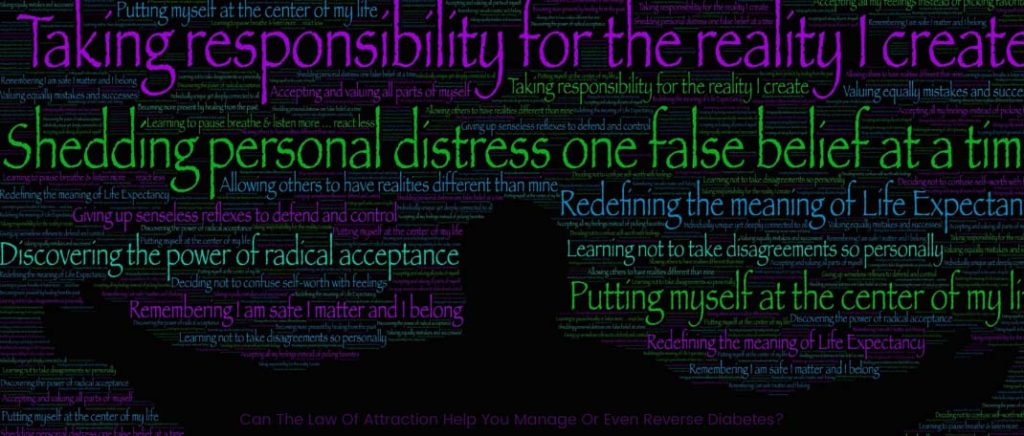
Can The Law Of Attraction Help You Manage Or Even Reverse Diabetes?
You know that a healthy attitude and positive mindset can have a positive impact on your physical health. Science is proving the mind/body connection and there is plenty of research to back it up.
However, for a conscious creator, can deliberately leveraging the Law of Attraction affect our physical body? The answer is YES!
The Law of Attraction, simply states, like attracts like. Like vibrations are attracted to each other. If you are vibrating perfect health, then you are a match to experiencing perfect health.
If you are experiencing anything less than perfect health, then there is a kink in your vibrational signal.
You have the power to choose your thoughts, whether positive or negative, and this has an impact on your physical health. By opening your mind to what is possible, you can enhance the phenomenal healing abilities of your own body.
You are aware of the reality of the “placebo effect” in modern medicine. This is a powerful demonstration of the importance of the mind in the physical recovery of the body.
Now, this is not to say that allopathic medicine doesn’t play a crucial role as well – particularly in managing Diabetes – but when you leverage the power of vibration with conventional or alternative medicine, healing can be accelerated.
Remember, what you believe you can achieve and if you believe you can heal Diabetes then you can!
Use Law Of Attraction Daily. Here Are 5 Simple Tips To Activate The Vibration Of Optimal Health:
1. Appreciate the wellness that is already present. Your body is an amazing being with an amazing ability to heal itself. Instead of placing your focus on what isn’t working the way you wish, shift your focus to what IS working well and celebrate that.
Remember, what you appreciate appreciates. By appreciating the wellness that is already flowing within you, the Law of Attraction will bring more wellness to appreciate.
2. Celebrate your “wellness tools”. This tip is all about shifting your perception around the tools you use to monitor your blood sugar and the current medicines you may be required to take.
If you are taking medication to lower your blood sugar levels, celebrate your lower sugar readings. Choose to see your meter as a means of measuring your progress towards optimal health.
The more you can focus on the positive aspects, the easier it becomes to stay in a positive/feel good vibration.
You want to take every opportunity to think and feel better knowing that with every positive thought and feeling, you are bringing yourself in alignment with the optimal health you desire.
3. Discover the “gift”. In every experience, there is a gift to be had. What is the gift in the experience of Diabetes for you? What are you being asked to look at? What thoughts are in need of shifting?
What beliefs did you hold that are no longer serving you and need to be released? For example, in Heal Your Body by Louise Hay, she lists the probable cause for Diabetes as a “longing for what might have been. A great need to control. Deep sorrow. No sweetness left.”
In Use Your Body to Heal Your Mind by Henry Grayson, PhD., he suggests a six question process that will help to identify what the body is trying to tell you through the symptom or illness.
• Why might I need this symptom/illness and why now? • What do I hope it will get for me? • What will it get me out of doing? • What emotion or need is it expressing for me? • What is the metaphor being expressed through this symptom/illness? • What is the family, tribal, or cultural belief involved with this symptom/illness? |
Of course, once you’ve answered these questions, the next step is to make different choices around the answers you’ve uncovered.
Commit to resolving the issue. You want to commit to creating a more healthy way to deal with the issue(s) that surfaced during your questioning process.
For example, if you discovered that you developed this illness to receive love and attention from your family, you may want to come up with another healthier way of receiving that love and attention instead of becoming ill.
Perhaps you discovered that you needed to slow down but you hold the belief that if you don’t do it, no one else will. This belief limits you and isn’t serving you. You want to shift that belief to one that serves and supports you.
5. Create optimal health affirmations. Affirmations are statements that state what you desire to create in your life. I am a firm believer in affirmations with one caveat, you must believe what you are saying or at least be willing to believe in the possibility of them.
While there are those who advocate the “fake it ’til you make it” approach to affirmations, I am not one of them. For me, I need to at least believe that what I am saying is possible so you want to word the affirmations in a way that you can stand behind them. It helps me to think of them more as an affirmative prayer which allows my mind to get behind the statement more readily.
• I am whole and healthy • My wellness increases daily • My body knows how to heal • I am filled with vibrant wellness |
Create the ones that feel good to you and most important is to have fun with the process.
Write your wellness story.This is a fantastic vibration activation tool and one I use quite frequently. Create your own optimal health story. This is your opportunity to tell your health story as you want it to be.
How do you feel as an optimally healthy person? What activities are you engaging in? What foods do you eat? Give yourself permission to let your imagination run free with this process. You are aiming for a story that lasts at least 17 seconds when you read it. If you can write one that lasts for 68 seconds, you are golden. Here is what Abraham (as channelled by Esther Hicks) has to say about 17 seconds:
“Just to get your attention we want to give you some physical comparison; 17 seconds of pure thought is equivalent to 2000 hours of action. If you are working a regular 40 hour a week job, that is about what you work in a year. 17 seconds equals 2000 action hours. If you can cross the 34 second mark, you can multiply your action by ten, 20.000 action hours. If you can cross the 51 second mark 3 times 17 you can multiply by ten again, a 200.000 action hour equivalent. If you can cross the 68 second mark – now that is just over a minute of pure con-contradicted, non-diluted thought it is equivalent to over 2 million action hours.” |
When you put these tools to use, you are leveraging the power of the Universal Laws and taking back your creative power. Just like gravity, the Law of Attraction is at work in your life whether you believe in it or not.
Why not choose to be more deliberate in the vibration you offer and create the life you desire instead of creating by default? Attract the wellness that is your birthright. Choose to leverage the power of YOU!

ELAINE C. TORRANCE-GINGRICH
Law Of Attraction Coach
Click here to find a practitioner.
RETURN TO FRONT PAGE
 Rejuvenation Pack · LOVINGLY MADE IN AUSTRALIA · |
| Living With Diabetes – Frequently Asked Questions | ||||||
|
Wordseach Puzzle[game-wordsearch id=”52368″ ] |
NEED MORE CUSTOMERS OR CLIENTS? ADVERTISE in this magazine. |
Have You Seen These Features • The Holistic Healing Portal  |

RETURN TO FRONT PAGE






